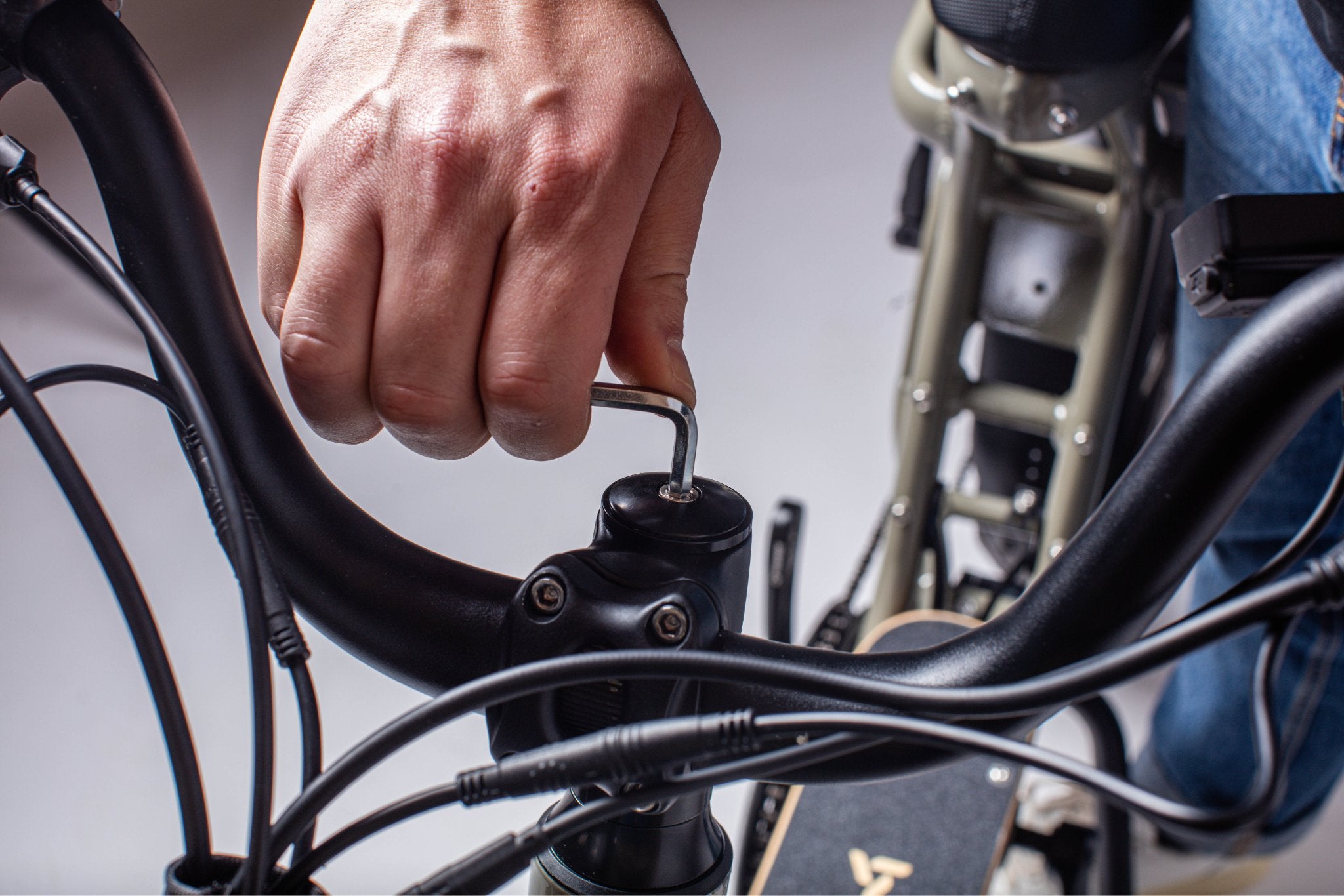
Unlocking an electric bike: what you need to know
, by ISAURE DUCROS, 5 min reading time

, by ISAURE DUCROS, 5 min reading time
Unclamping an electric bike involves removing the pedal assistance clamp set at 25 km/h and therefore having more power and speed. Although tempting, this practice is not recommended. We'll explain it to you.
An electric bike is a bike equipped with a battery, motor, controller, sensor and display. ( Find all our explanations on how electric bikes work here.)
The NF EN 15194 standard governs the design of electric bicycles and the application of a safety check on them. It also defines the main criteria which make it possible to make a clear distinction between an electrically assisted bicycle and a moped.
There are 3 essential criteria to identify an electrically assisted bicycle (VAE):
Mopeds (such as speed bikes, 50 cm³ scooters, solex and other mopeds) are vehicles capable of traveling up to 45 km/h and are subject to the Highway Code.
A speed bike is an electric bicycle with a maximum speed of 45 km/h. In France, this type of electric bike is considered a motor cycle and its use is subject to certain conditions.
Unlike an e-bike, a speed bike requires:
It is prohibited on cycle paths.
Unclamping an e-bike involves removing the pedal assistance clamp set at 25 km/h and therefore having more power and speed.
This can be done manually, with an illicit unlocking kit which allows the restraining system to be deactivated at 25 km/h or via a suitable controller.
We are frequently asked the question of unlocking electric bikes, but is it legal and safe to unlock an electrically assisted bike?
The answer is no.
Unblocking an e-bike amounts to transforming it into an unapproved moped or speed bike and this is not without legal consequences.
In addition to the fact that the conditions of use of a moped are not the same and that it must be registered and have specific insurance, the law strictly regulates the penalties incurred.
Article L317-1 of the Highway Code provides for sanctions for the driver of an unrestrained bicycle:
Modifying the speed limit device in order to allow the electric bike to exceed its maximum authorized speed is punishable by one year's imprisonment and a fine of 30,000 euros.
Any person guilty of this offense also faces the additional penalty of suspension, for a maximum period of three years, of the driving license, this suspension being limited to driving outside of professional activity.
The vehicle, machine or cycle on which the offense was committed is immobilized and removed from circulation until it has been brought into compliance or repaired. A decree of the Council of State sets the conditions of application of this paragraph.
VAEs (electrically assisted bicycles) are designed to be safe at limited power and speed. By increasing speed, the risk of accident for oneself or others increases proportionally.
Unclamping can also cause wear of certain components such as the motor or lead to a loss of battery life. An overused battery may have difficulty producing enough energy and this is not without risk.
In the event of an accident caused by an unbridled electric bike, the driver, even if injured, is no longer a simple cyclist in the eyes of insurers. Civil liability insurance, which you generally take out with your home insurance, is no longer enough to cover the damage. Reclassified as a moped, specific insurance must have been signed. The driver will therefore not be able to receive any compensation.
If the driver of the unrestrained vehicle is not responsible for the accident, again unrestraining may have consequences on compensation. The offender's insurer could argue that the speed was too high or that the bike was unrestrained, all with the aim of refusing or reducing compensation.
More broadly, if the driver of the unrestrained bicycle is responsible for injuries, he or she faces criminal prosecution with aggravating circumstances linked to speed and unrestraining. He will have to personally compensate the victim(s), without being able to rely on his insurance.
Just like the warranty, an unrestrained bike loses its approval.
What does that mean ?
An unapproved bicycle becomes illegal and is no longer authorized to circulate on public roads. Unrestrained bicycles can only be used on private roads.
An unrestrained bike regularly encounters problems when it comes to resale. If you want to resell your unrestricted bike to a specialized store for example, it is certain that they will not be able to accept it.
She just needs to check the motherboard to see all the modifications made to the bike. Practices such as unclamping will be detected, and the store will be forced to refuse the bike.
The owner of the bike will therefore have difficulty reselling his bike because no site or store tolerates taking back an illegal bike.
To summarize: unbridling an electric bike may seem tempting but the law is very clear and strict on the subject. Unrestraining an electric bike is illegal and can result in heavy penalties.
To go further, if in fact you still choose to unblock your bike and you choose to insure it, equip it with a license plate (and a registration document), lighting and a specific horn and if you yourself are equipped with an approved helmet, you can use it on public roads. The unrestrained bicycle is then considered a motorized two-wheeler and you will have to comply with the rules of the highway code in force.


